Delhi, the capital city of India, is known for its top-notch medical facilities, both private and public. However, not everyone can afford high-cost private healthcare, making government hospitals a vital choice for quality, affordable medical services. Government hospitals in Delhi are equipped with highly qualified doctors, state-of-the-art facilities, and departments specializing in nearly every area of healthcare. These hospitals aim to serve everyone, regardless of financial status, making healthcare more accessible to the general population. In this blog, we’ll guide you through some of the best government hospitals in Delhi.
Finding best hospital for your diseases is not the only fouse paying the hospital bill is the focuse point and Crowdfunding platforms like impactguru help you to pay your hospital bills.
Whether you’re seeking emergency care, specialized treatment, or routine medical check-ups, these hospitals offer excellent services, often at minimal or no cost. From hospitals recognized for trauma care to those specializing in cardiology, orthopedics, and maternal health, Delhi’s government hospitals stand out for their dedication to public service, reliability, and skilled professionals. Explore this list of top government hospitals in Delhi and learn about their services, specialties, locations, and how they can help you and your family with essential healthcare needs. Crowdfunding websites are coming as a life saver for many families.
Read More: Top Hospitals for Heart Transplant in Chennai & Cost (2025)
Table of Contents
- List Of Best Government Hospitals In Delhi
- 1) AIIMS, Delhi
- 2) VMMC & Safdarjung Hospital
- 3) Dr. Ram Manohar Lohia Hospital (RMLH)
- 4) Govind Ballabh Pant Hospital
- 5) Guru Teg Bahadur Hospital
- 6) Lok Nayak Hospital
- 7) Dr. Baba Saheb Ambedkar Hospital
- 8) Guru Gobind Singh Government Hospital
- 9) Pt. Madan Mohan Malaviya Hospital
- 10) Deen Dayal Upadhyay Hospital
- Conclusion
List Of Best Government Hospitals In Delhi
1) AIIMS, Delhi
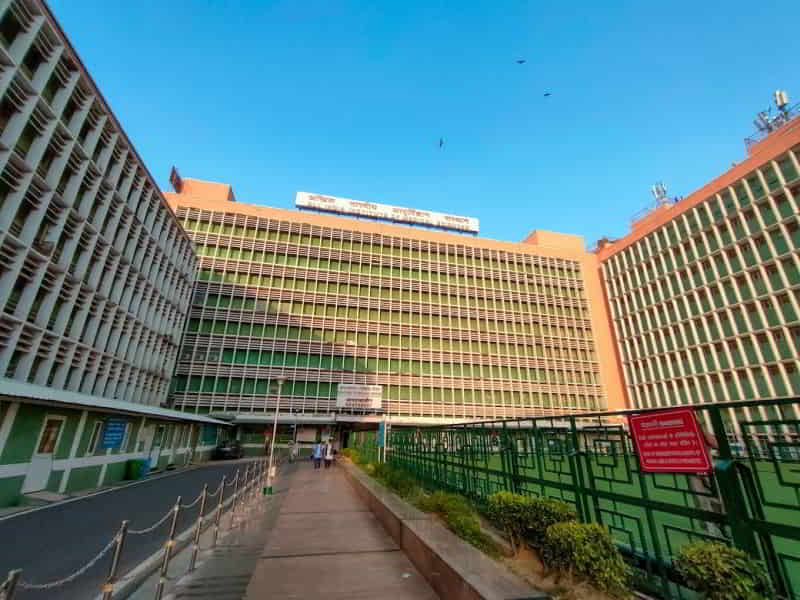
The foundation stone of AIIMS Delhi was laid in 1952, and it was created as an autonomous institution through an Act of Parliament in 1956. The institute was a realization of a dream shared by the Country’s first Prime Minister, Jawaharlal Nehru, and the then Health Minister, Rajkumari Amrit Kaur, who envisioned a center that would set the pace for medical education & research in Southeast Asia. Some of its notable achievements:
Read More: Best Hospitals for Liver Transplant in Chennai and Their Costs
1. Innovative Medical Research: AIIMS has been at the forefront of medical research in India, with its faculty and researchers contributing over 600 research publications annually.
2. Quality Medical Education: The institute offers comprehensive teaching programs across 42 disciplines at both undergraduate and postgraduate levels, producing a significant number of India’s top medical professionals.
3. Patient Care: Known for providing low-cost medical care, AIIMS serves a large number of patients and offers services in various specialties and super specialties.
4. Rural Health Services: Through the Comprehensive Rural Health Centre at Ballabgarh in Haryana, AIIMS extends its health services to approximately 2.5 lakh people, emphasizing community medicine and primary healthcare.
5. International Collaborations: The institute has engaged in various international partnerships, enhancing its global standing and facilitating exchange programs for students and faculty.
6. Specialty Centers: AIIMS has established super-specialty centers for cardiac sciences, neurosciences, oncology, and ophthalmology, among other specialties, which provide focused care and advanced treatments.
7. National Rankings: Consistently ranked as the top medical college in India, AIIMS Delhi has been recognized for its excellence in medical education and patient care.
8. Public Health Initiatives: AIIMS has been actively involved in public health campaigns and initiatives, addressing issues like infectious diseases, child health, and non-communicable diseases.
Read More – 10 Best liver Government Hospitals in Delhi
Read More: Best Hospitals for Heart Transplant in Bangalore and Their Costs
2) VMMC & Safdarjung Hospital
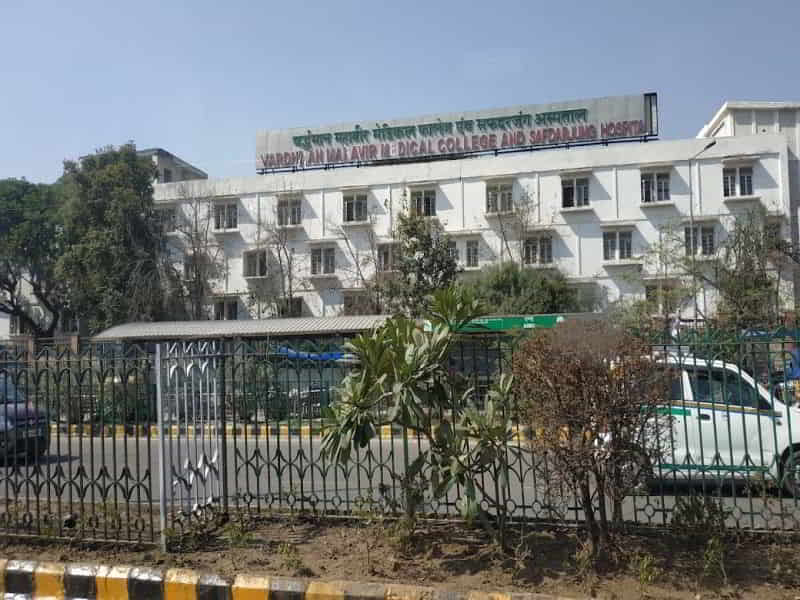
Established during the Second World War in 1942 as an American Army Base Hospital, it was later taken over by the Government of India in 1954 under the Ministry of Health. Since then, it has grown into one of the largest tertiary-level multi-disciplinary healthcare institutions in the region.
The hospital began with a modest 204 beds and has expanded to a colossal institution with over 3000 beds today. It is not just the scale but also its commitment to providing comprehensive healthcare across various specialties that make Safdarjung Hospital remarkable.
Read More: Best Kidney Transplant Hospitals in Ahmedabad and Their Costs
Achievements of VMMC & Safdarjung Hospital:
1. Postgraduate Medical Education: Since 1962, the hospital has been a center for postgraduate medical education, contributing significantly to the pool of skilled healthcare professionals in India.
2. Pioneering Medical Treatments: The hospital is known for its advanced levels of care, including cutting-edge treatments and surgeries in specialties such as General Medicine, Cardiology, Neurosurgery, and more.
3. Research and Development: The hospital focuses on innovation and has been involved in significant research activities, which have improved patient care and treatment methodologies.
4. Patient Care Services: The hospital offers a range of services, from blood banks to intensive care units, ensuring that patients receive holistic care.5. Community Outreach: Safdarjung Hospital extends its services beyond its walls, providing medical care to millions of citizens not only from Delhi but also from neighboring states and countries.
Read More: ImpactGuru’s Hospitals Directory
3) Dr. Ram Manohar Lohia Hospital (RMLH)
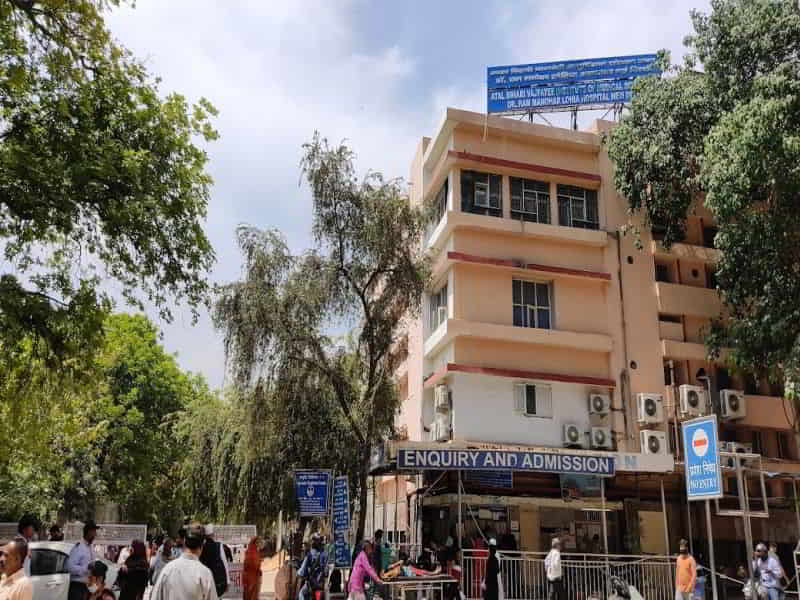
Established in 1932 by the British Raj as Willingdon Hospital, it initially served as a healthcare center for government staff with a modest capacity of 54 beds. After India’s independence, the hospital’s administration was transferred to the Central Government’s Department of Health and Family Welfare in 1954. It was later renamed in the 1970s to honor Dr. Ram Manohar Lohia, a prominent figure in the Indian independence movement & a determined advocate of socialism.
The hospital has since evolved into a premier medical institution, boasting a sprawling 30-acre campus and a significant increase in capacity to 1420 beds, with plans to expand further. Its achievements in medical treatment and patient care are numerous:
– Annually, RMLH caters to approximately 1.2 million outpatients, admits around 46,000 inpatients, and attends to about 150,000 emergency cases.
The hospital has advanced medical facilities and conducts around 10,000 CT scans, 2,000 MRI scans, 200,000 X-ray cases, and 2.8 million laboratory tests each year.
– It performs about 9,000 major and 40,000 minor surgical operations annually.
– RMLH has established a 71-bed Nursing Home specifically for Central Government Health Scheme beneficiaries.
– The hospital has expanded its educational role by offering undergraduate and postgraduate courses through the Atal Bihari Vajpayee Institute of Medical Sciences attached to the hospital.
Read More: Cost of Heart Transplant in Noida and Best Hospitals
4) Govind Ballabh Pant Hospital
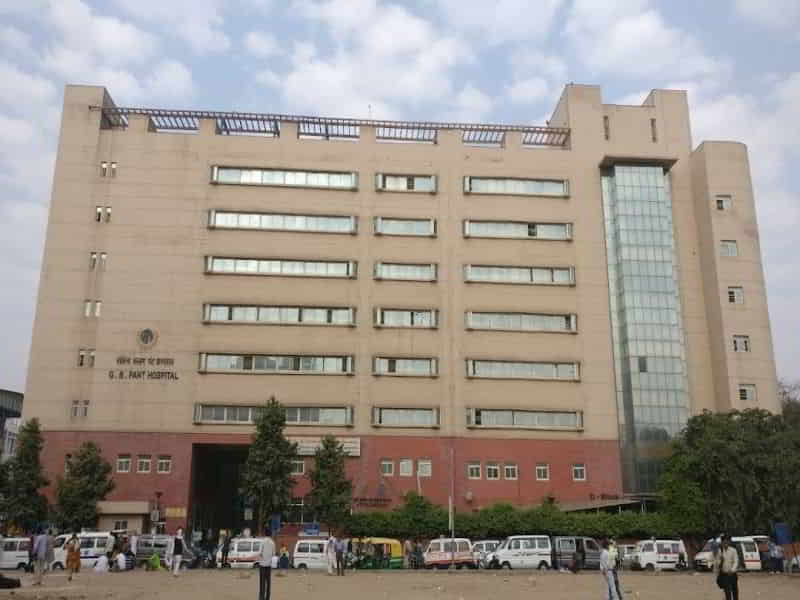
The cornerstone of this esteemed institution was placed in October 1961, and it was officially opened by the then PM, Pt. Jawaharlal Nehru, on April 30, 1964. From its humble beginnings with 229 beds, GBP Hospital has expanded to a robust 700-bed facility catering to the various medical needs of the population. Here are some of the notable accomplishments:
– Tertiary Care Institution: Recognized internationally, GBP Hospital specializes in heart, brain, gastrointestinal, and psychiatric disorders, providing super-specialty treatment to approximately 300,000 patients in the OPD and nearly 15,000 inpatients annually.
– Post-Doctoral Teaching and Training: The hospital is a reputed center for post-doctoral education, offering DM degrees in Cardiology, Neurology, Gastroenterology, and M.Ch. Degrees in Cardio-Thoracic Surgery, Neuro Surgery, and Gastrointestinal Surgery, affiliated with Delhi University.
– Research and Development: GBP Hospital is recognized for groundbreaking research and is a hub for Ph.D. and DNB courses, fostering an environment of academic and clinical excellence.
– State-of-the-Art Facilities: The hospital has consistently upgraded its facilities, including procuring advanced medical equipment such as cardiovascular angiography systems, digital radio-fluoroscopy X-ray machines, and automated IHC stainers, ensuring cutting-edge treatment for patients.
Read More: Best Hospitals for Heart Transplant in Hyderabad and Their Cost
5) Guru Teg Bahadur Hospital
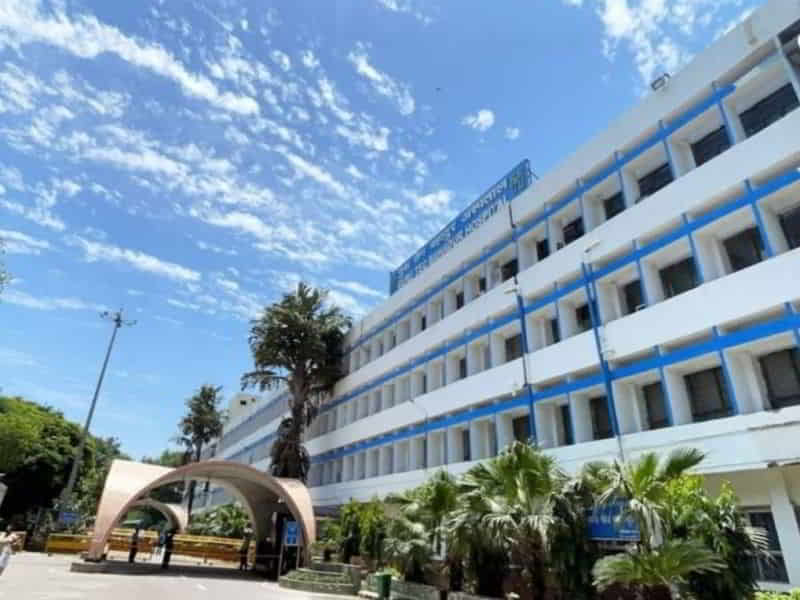
Established in 1979 and becoming fully functional in 1987, GTBH was envisioned as a premier medical institution providing quality healthcare services to the eastern part of the capital city. It is affiliated with the University College of Medical Sciences, University of Delhi, and serves as a teaching hospital, shaping the future of medical professionals.
The hospital began its journey with a modest 350-bed capacity, now expanding to an impressive 1,700 beds. It now caters not only to Delhi residents but also to patients from neighboring states. This expansion reflects GTBH’s commitment to accessibility and comprehensive care.
GTBH’s achievements in medical treatment are numerous and noteworthy:
– It is recognized for its tertiary care in complex medical disciplines such as neurosurgery, hemodialysis, and peritoneal dialysis.
The hospital boasts a fully functional neurosurgery department with state-of-the-art facilities for all neurosurgical emergencies and routine brain and spine operations.
– A dedicated Anti Retroviral Treatment (ART) center for HIV & AIDS treatment exemplifies GTBH’s role in addressing critical public health challenges.
– The hospital has received the prestigious National Quality Excellence Award for Healthcare, acknowledging its outstanding performance in patient care, clinical outcomes, and service quality.
Read More: Best Hospitals for Heart Transplant in Gurgaon and Their Cost
6) Lok Nayak Hospital
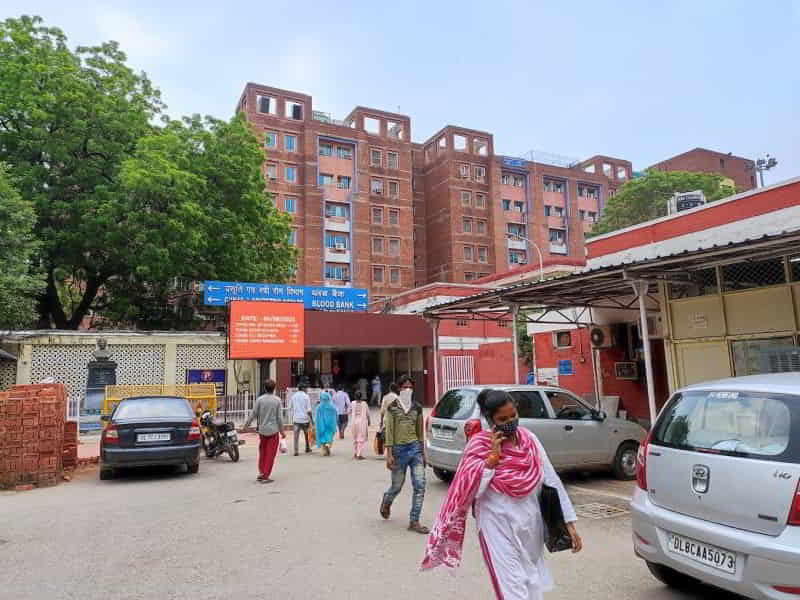
Lok Nayak Hospital, formerly known as Irwin Hospital, was established on January 10, 1930, by Lord Irwin, the then Viceroy of India. The hospital started as a simple facility with 350 beds, aimed at addressing the healthcare requirements of the city’s residents. Over the years, Lok Nayak Hospital has evolved into one of the most prestigious government hospitals in Delhi, reflecting the city’s growth and the increasing demand for medical services. Here are some of the notable milestones:
– Expansion of Services: Post-independence, the influx of refugees necessitated an expansion of medical facilities. Lok Nayak Hospital rose to the occasion, becoming one of Northern India’s largest hospitals by the early 1950s.
– Renaming and Rebranding: In November 1977, the hospital was renamed in honor of Jayaprakash Narayan, a prominent independence activist and politician. The name was later shortened to Lok Nayak Hospital in 1989.
– Academic Association: Recognizing the need for a medical college, the Government of India established Maulana Azad Medical College in 1957, attached to Lok Nayak Hospital.
State-of-the-Art Facilities: The hospital has modern medical equipment and offers comprehensive treatment options. It also functions as a tertiary referral center for complicated cases.
– Skilled Workforce: With over 1597 commissioned beds, the hospital boasts a highly skilled and dedicated team of doctors, nurses, and staff.
– Phased Expansion: To meet the growing healthcare demands, the hospital has undergone phased expansions, adding 500 beds at the end of the first phase to enhance services in various departments.
Read More: Best Hospitals for Heart Transplant in Kolkata and Their Costs
7) Dr. Baba Saheb Ambedkar Hospital
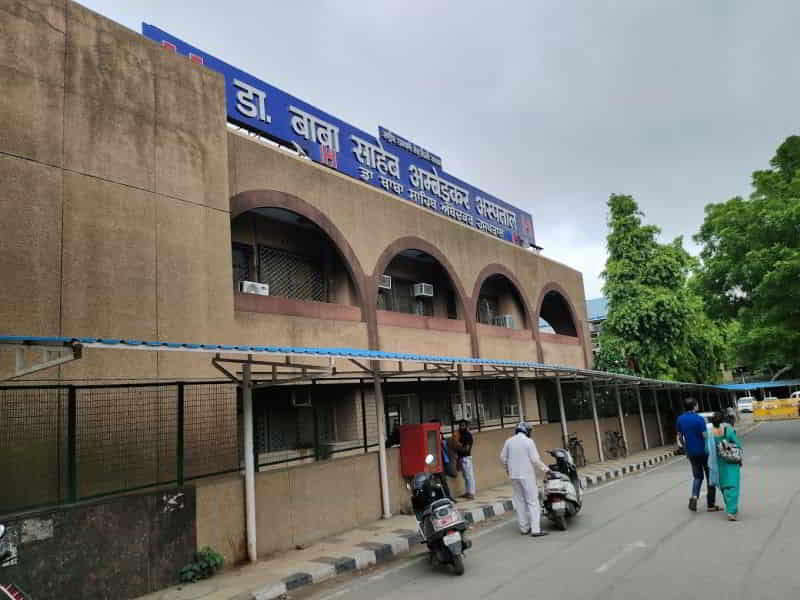
The foundation stone of this prestigious health institution was laid by the then Hon’ble PM Shri P.V. Narasimha Rao on November 19, 1991. Since opening its Out-Patient Department (OPD) services on August 2, 1999, the hospital has expanded its facilities to include a 500-bed multispecialty hospital with super specialties like Neurosurgery, Nephrology, Pulmonology, and Urology.
Achievements of Dr. Baba Saheb Ambedkar Hospital:
– Medical Education: Initiation of a Medical College with 100 undergraduate seats, marking a significant milestone in medical education.
– Specialized Services: Establish super-specialty departments such as neurosurgery and urology, which have state-of-the-art facilities.
– Innovative Health Programs: Implementation of online donation India OPD registration and a one-stop center for victims of sexual assault, enhancing patient accessibility and support.
– Community Engagement: The hospital organizes blood donation camps and special plantation drives, reflecting its commitment to societal well-being.
– Technological Advancements: The upgrade of Dialysis Services and the introduction of plateletpheresis in the blood bank showcase the hospital’s dedication to adopting advanced medical technologies.
Read More: Best Hospitals for Heart Transplant in Pune and Their Costs
8) Guru Gobind Singh Government Hospital
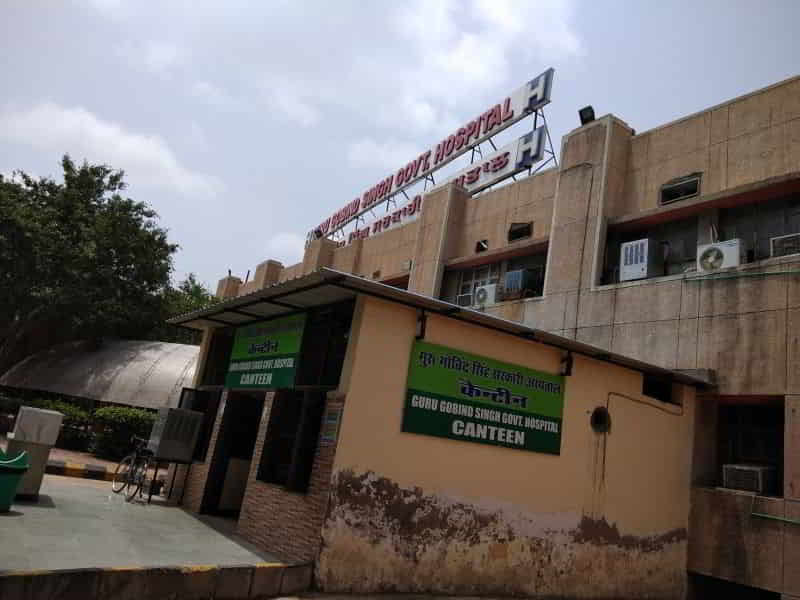
The foundation of this 100-bed hospital was laid in 1993 with the noble aim of providing secondary-level healthcare to the economically weaker sections of society. The outpatient department (OPD) services were inaugurated on December 30, 1995, marking the commencement of a new era in medical care for the approximately five lakh population in the surrounding areas.
Over the years, the hospital has achieved remarkable milestones in medical treatment, showcasing its commitment to health and wellness. Here are some of the notable achievements:
– Patient Influx: The hospital has steadily increased patient numbers, indicating trust and reliability in its services.
– Emergency Care: It has efficiently managed many emergency cases, reflecting its preparedness and responsiveness.
– Medicolegal Cases: The hospital has handled numerous medicolegal cases, ensuring justice and support for the affected.
Laboratory Tests: The hospital has conducted many laboratory tests, which signifies its robust diagnostic capabilities.
– Surgeries: Major and minor surgeries have been performed with precision, contributing to the hospital’s surgical excellence.
– Maternal and Child Health: The hospital’s excellence in maternal and child healthcare has been recognized with awards, highlighting its exceptional prenatal, postnatal, and pediatric services.
9) Pt. Madan Mohan Malaviya Hospital
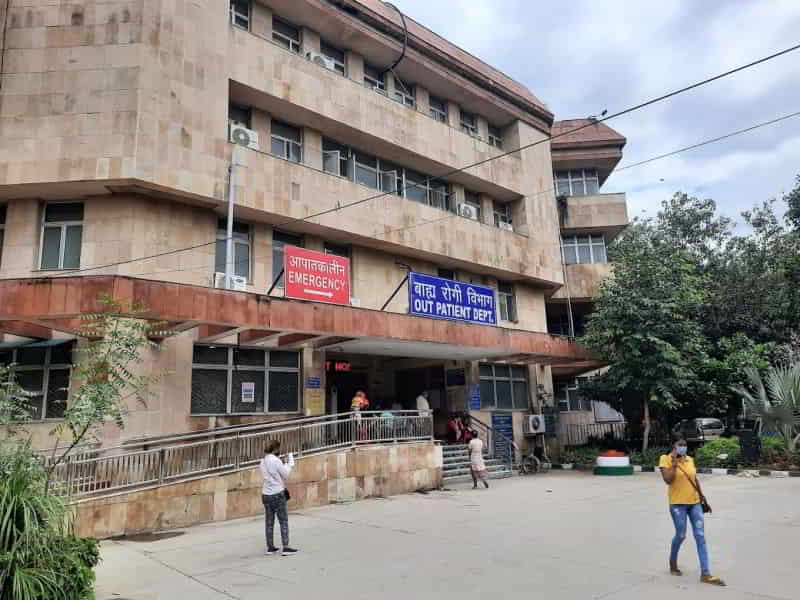
Established in 1996, Pt. Madan Mohan Malaviya Hospital in New Delhi was named after the revered Indian educationist and freedom fighter Pandit Madan Mohan Malaviya. The hospital was founded to offer comprehensive medical services to the community. Here are some of its notable achievements:
1. Comprehensive Care: The hospital offers a wide range of medical specialties, ensuring patients receive holistic care under one roof.
2. Advanced Facilities: Equipped with state-of-the-art medical technology, the hospital provides cutting-edge treatment options to patients.
3. Skilled Professionals: A team of highly skilled doctors & medical staff are dedicated to delivering exceptional patient care.
4. Community Health: The hospital has made significant contributions to community health, often organizing camps and awareness programs.
5. Recognition: It has been honored with awards for outstanding patient care and innovative medical practices.
6. Accessibility: Being a government-funded institution, it provides affordable medical services to all sections of society.
10) Deen Dayal Upadhyay Hospital
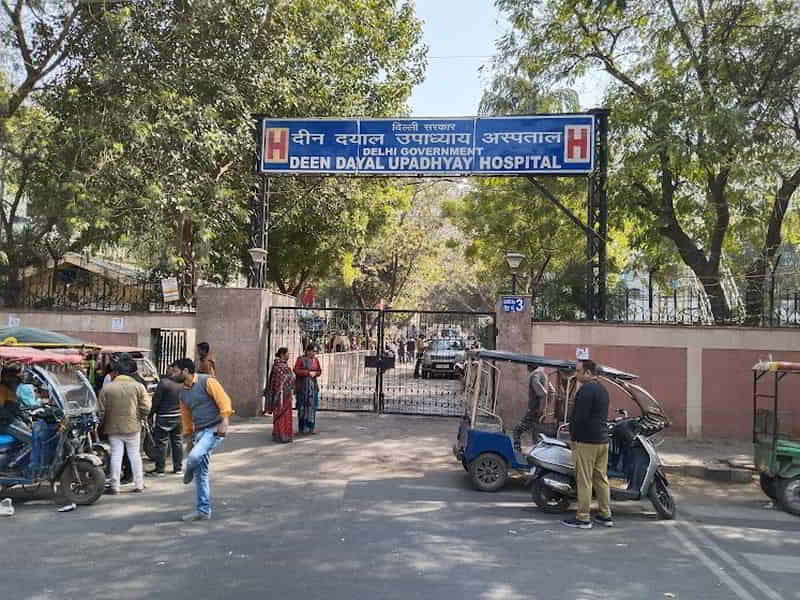
Deen Dayal Upadhyay Hospital in Delhi was established in 1970 and has since expanded from a modest 50-bed facility to a 500-bed hospital in 1987. The hospital began its casualty services in 1987, which became operational round the clock in April 1998. A significant milestone was achieved in 2008 with the commissioning of the trauma block, which increased the bed strength to 640 and shifted emergency services to this new block with an expanded emergency room and wards.
The hospital’s achievements are numerous and noteworthy:
– Expansion from 50 to 640 beds to accommodate the growing needs of West Delhi.
– Round-the-clock casualty services were initiated in 1998 to ensure continuous patient care.
– Commissioning of the trauma block in 2008, enhancing the hospital’s emergency response capabilities.
– Provision of specialized services and training for postgraduate and undergraduate medical students and paramedics.
Conclusion
Delhi’s government hospitals are crucial in delivering quality healthcare to millions regardless of income level. With skilled medical staff and facilities for nearly every health need, these hospitals are a lifeline for those seeking reliable, affordable care. Whether you need urgent treatment, specialized care, or routine check-ups, Delhi’s government hospitals are ready to serve.
A fundraising platform can also be a helpful alternative for those facing costly treatments that may stretch beyond a family’s budget. These platforms allow individuals to raise financial support from communities and well-wishers, easing the burden of medical expenses. Together, best government hospitals and supportive online donation India help the most the fundraising options make quality healthcare more accessible to all. Visit ImpactGuru for more Details.












